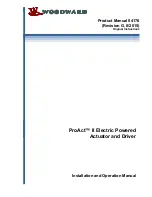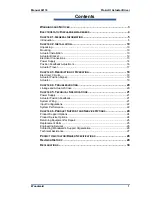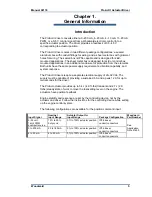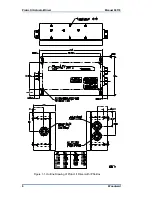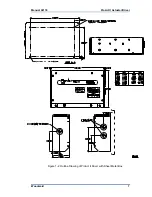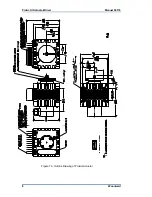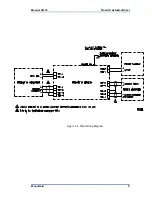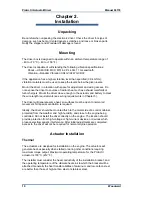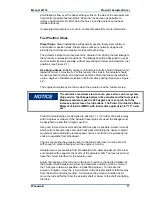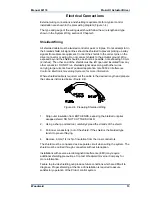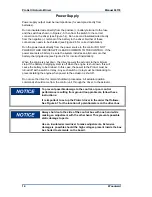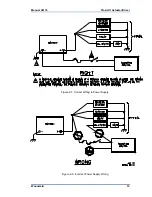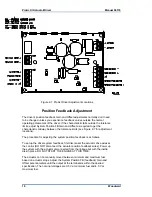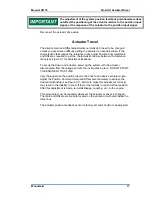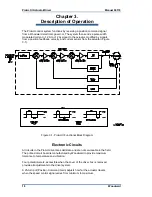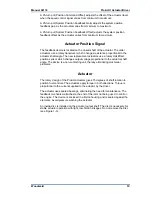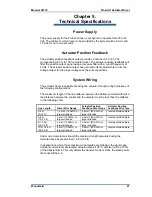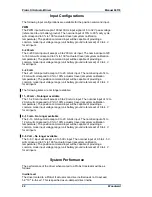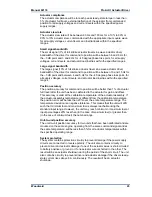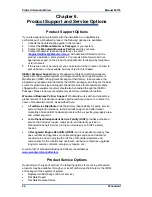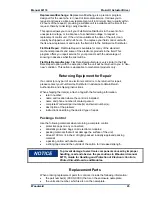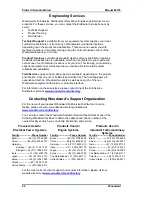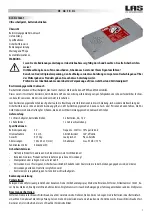
Manual 04176
ProAct II Actuator/Driver
Woodward
11
Uninhibited air flow over the heat-exchanger fins on the side of the actuators will
help control possible heat problems. Keep the fins as clean as possible to
improve heat transfer. Do NOT paint the fins, since this will reduce the heat
transfer efficiency.
If operating temperature is a concern, contact Woodward for more information.
Fuel Position Stops
Diesel Stops.
Diesel installations will generally use the fuel system minimum
and maximum position stops. Diesel engine racks are normally designed to
provide the minimum and maximum stops without binding.
The actuator's stops must not prevent the actuator from driving the fuel linkage to
the minimum and maximum positions. The linkage should be designed to use as
much actuator travel as possible, without preventing minimum and maximum fuel
positions (see Figure 2-1).
Gas Engine Stops.
Butterfly valves in carburetors will often bind if rotated too far
toward minimum or maximum. For this reason, the stops in the actuator should
be used at both minimum and maximum positions. Note that the stops will allow
up to 3 degrees of additional rotation in both directions during impact (see Figure
2-2).
The engine must always shut down when the actuator is at the minimum stop.
The actuator's maximum slew rate can place stress on fuel system
stops and on the linkage between the actuator and the fuel system.
Maximum actuator speed is 900 degrees per second in both the
increase and decrease fuel directions. The ProAct II actuator's Mass
Moment of Inertia (MMOI, with inertia disc applied) is 3.67*10
-3
in-lb-
sec².
ProAct II actuator stops are designed to absorb 1.1 J (10 in-lbs) of kinetic energy
with 3 degrees overtravel. If the actuator travel stops are used, the linkage must
be designed to allow this 3 degree overrun.
Use good rod-end connectors with as little free play as possible. Select rod ends
which will not become loose and which will wear well during the nearly constant
movement associated with precise speed control. Low-friction, long-wearing rod
ends are available from Woodward.
The link connecting the actuator lever to the fuel-control lever must be short or
stiff enough to prevent flexing when the engine is running.
Actuator levers are available from Woodward which allow adjustment of the rod-
end location with respect to the center of the actuator shaft. The lever used must
have the correct interface for the actuator used.
Adjust the location of the rod end on the lever to achieve the desired rotation of
the actuator shaft between minimum and maximum positions. (Use as much of
the 75-degree rotation as possible—at least 60 degrees.) To increase the
amount of rotation, move the rod end closer to the actuator shaft or farther away
from the shaft controlling fuel flow. To decrease the amount of rotation used,
move the rod end farther from the actuator shaft or closer to the shaft controlling
fuel flow.

